
|
|
|
|
|
|
|
|
|
|
|
|
|
|
 |
|
|
||||||||||||
|
|
||||||||||||||
| Press | |
|
Interviews/Articles
Preview of the Collision Tour in the San Diego Reader Interview in Web Dice (Japanese) Article in Signal To Noise
Review of a performance at Museu Oriente, Lisbon, Portugal. Review of a concert at Luggage Store Gallery.
|
|
|
Luz Azul
unforgettable record from Luz Azul project...this music will be eternal - Stellage Store A remarkable record. Give it time and ration yourselves. - Richard Foster, Louder Than War Ears are fully emerged into this mind-bending psychedelic realm of audio wonders, clearly a shamanic sensation that nobody should miss out on! - Kai Nobuko, Yaah I Know It Sucks It sounds as if a message was broadcast from an unknown dimension which, after light years, is finally received by us. - Georges Tonla Briquet, Jazzhalo |
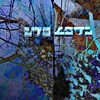
|
|
Proxima b
Instrumental quartet composed of DB (guitar), Risa Takeda (keyboards), 3 ch (bass) and Marcos Fernandes (drums). Proxima b is a 3-song EP featuring spontaneous compositions from their studio recording session. Proxima b finds the band displaying improvisational interplay on three extended tracks that alternate between heavy rock beats, funk grooves and jazzy riffs. While The Argonauts first album was more surf, dub and psychedelic music, this takes them to the edge of prog and space rock. Proxima b captures The Argonauts live performances that often feature extended improvisation. Spacy, as an EP titled Proxima b should b. Very nice indeed. - Carson Street, KFJC |
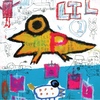
|
|
Here Come The Argonauts!
This is WAY fucking cool. A four-piece all-instrumental group from Japan jumps from style-to-style on each track, and every one is stellar. You get some surf, some fubk, some dub, some psychedelic, some rock...honestly something for most everyone. The star of the show for me is keyboardist Risa Takeda, who effortlessly slides through each track with perfect organ, electric piano or synthesizer accompaniment. Highly recommended. - KFJC The Argonauts are a four-piece underground supergroup of sorts, surfing out of Japan with this high octane album of instrumental jams that shows all the players, guitar, bass, drums and keyboards to be in excellent form. The four members, DB, 3 ch, Risa Takeda (this name rings a bell) and Marcos Fernandes have all played and collaborated in the Japanese underground, but this is their break for something a little more populist. The album contains nine songs and at a little under forty-five minutes, each track is given plenty of opportunity to stretch its legs and gather some momentum. The cover containing a lovely stylised image of a canoe amidst huge waves against a backdrop of Mount Fuji led me to assume that we were looking at some sort of surf rock instrumental album with a bit of modernism a la Man or Astroman, but apart from the first track - which does go down the surf rock route, the guitar high and yearning, a Cramps-like backbeat and low, sinister bass - the rest of the album covers a myriad of bases and in the sort of excellent way that perhaps only the Japanese can. - Mr Olivetti, Freq Post-pop, post-surf, and post-instrumental, this is a band that appears to come from Japan but combines seeds of the classic SoCal surf sound, urban dubstep, and euro-electronica. The result feels both interesting unto itself and capable of recreating excitement all these various styles created when they first appeared. Nothing here is predictable, but when it's played you're happy it landed at your subway stop. This is one of the best sounding bands I've heard in a while; they push boundaries just far enough to exited you yet remain grounded in successful pop sensibilities and proven electro beats. That makes them a band that's not just a novelty act. - Carl F Gauze, Ink 19 |

|
|
Sounding the Space
A tram rattles through the streets of Kyoto. You hear it first, then see it. Sitting on board is percussionist Marcos Fernandes, wearing headphones, listening intently in real time to the sounds of the city. A little later in this thought-provoking documentary, directed by Californian musician and film maker Hans Fjellestad, Fernandes speaks of the adverse impact of the Walkman and its successors, cutting us off from the incessant flow of ambient auditory events. Intermittently, he appears on screen clutching a microphone as he wanders noisy urban streets or tunes in delicate sounds emanating from some quietly busy natural environment. Fernandes was born in Yokohama and departed for California in his late teens. In 2008, after 35 years performing music and gathering sounds around the world, he returned to live in Japan. Sounding The Space offers a glimpse of that renewed contact with his homeland, and more specifically reflects his efforts to connect with the legacy of early 20th century architect Uheiji Nagano, the maternal grandfather he never knew. As Fjellestad's camera shows, Nagano's work (often commissioned by banks) echoes Western models, with elegantly proportioned facades indebted to the European Renaissance and a clear taste for neoclassical porticos. In his design for Yokohama's Okurayama Memorial Hall, Fernandes remarks, Nagano came full circle, consciously incorporating Japanese philosophical values within Western architectural forms. The centre for spiritual research was one of four sites, each in a different city, where Fernandes staged concerts in 2009, involving guest musicians, dancers and body artists to negotiate through sound and movement the acoustic and physical properties and peculiarities of each space. Using percussion instruments, sampled sounds and electronics, Fernandes entered into lively dialogue with his grandfather's buildings. The other constant presence on these occasions was Yumiko Tanaka. An accomplished exponent of traditional Japanese music, she is also an exploratory improvisor on the three-stringed shamisen. Other participants were laptop maestro Carl Stone, pianist Masatoshi Utashima, saxophonist Koichi Akada and former Boredoms guitarist Seiichi Yamamoto. Footage drawn from their concerts provides the main substance of Fjellestad's film, but he mixes it with clips of the buildings, some vintage and monochrome, and a selection of eloquent talking heads outlining the significance of Nagano, interspersed with shots of urban flows and trajectories, nature imagery and atmospheric field filming. These assorted elements and shifting camera angles evoke multiple points of view � visually, sonically and conceptually � from which to witness encounters of tradition with innovation, West with East, the city with rural tranquility and art with the practices of everyday life. Beyond such concerns raised by Fernandes's personal reconnection with Japan, this film can be seen as a probe into the aesthetic relationship summed up in Goethe's contention (following Schelling) that architecture is frozen music, music is liquid architecture. On a flat screen with stereo playback that tidy cliche remains an elusive and unresolved conjecture, but in recent years Fernandes has continued to pursue his site-specific project, engaging in depth with that very issue. - Julian Cowley, The Wire "Ich bin mehr an Sound als an Musik interessiert", meint Marcos Fernandes zu Beginn des dokumentarischen Films, den Hans Fjellestad produzierte. Marcos Fernandes ist Improvisator, Komponist, Instrumentalist und Phonographer. So ist er hier zu sehen, wie er mit einem Mikrophon und Aufnahmegerät in der Stadt unterwegs ist, die umliegenden Geräusche aufzunehmen. Marcos Fernandes hat einen portugiesischen Vater und eine japanische Mutter. 1973 zog das Elternpaar mit seinem in Japan geborenen Sohn nach Kalifornien. 2008, 35 Jahre später, kehrt Marcos Fernandes an seinen Ursprung zurück, Wurzeln zu ergründen, aber auch, um die Arbeiten seines Großvaters Uheiji Nagano zu sehen, der als bedeutender Architekt vielfach klassische Gebäude entwarf und baute. Die Dokumentation enthält Konzertmitschnitte improvisativer Musik, historische und aktuelle Aufnahmen japanischer Gebäude, von Uheiji Nagano entworfen und gebaut, teilweise von Historikern und Architekten erläutert; da sind Straßenszenen mit Marcos Fernandes und Mikrophon, Interviews mit mehreren Personen, darunter Marcos Fernandes selbst, seine Mutter, Künstler und Architekten. Die Musik ist überwiegend frei improvisierte Avantgarde, die starke (japanische) folkloristische Bezüge hat, überwiegend von japanischen und amerikanischen Musikern auf verschiedenen Bühnen gespielt und live aufgenommen wurde. Da sind starke Ansätze zum Free und Avantgarde Jazz, indes weniger präsent als die klassischen folkoristischen Muster. Die Musik, die Konzerte samt Tänzern und Performern sind stark abstrakt und intellektuell, dabei sehr erfüllend und überraschend. Die Aktion der Musiker auf der Bühne, die Tänzer davor, das entspannte Publikum - die Dokumentation ist großartig gefilmt und produziert. Der etwa 60 Minuten andauernde Film ist sehr kurzweilig ‚komponiert' - für Freunde abstrakter Musik und Interessierter an Marcos Fernandes Arbeit sowie japanischer Architektur. Nichts wirkt überladen oder aufgedrängt, Filmemacher Hans Fjellestad lässt Musik wie Bilder und Interviews sprechen. Da ist nichts, was die ‚Kunst' oder Qualität der Musik, der Gebäude, der handelnden Personen hervorhebt, nur die schlichte Präsentation. Die nüchterne Bildsprache, die verrückt seltsamen Tänzer, die abstrakte Musik und die Arbeit der Musiker auf der Bühne, die Häuser und Interviews - als Film ebenso erfüllend interessant wie der Inhalt an sich. Großartiger Film! - Volkmar Mantei, Ragazzi! |
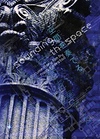
|
|
Jiro Miwa - lll
"This is the most bluesy song-oriented rock album in Japan. As if great musicians from various generations played together for a youth like me", singer-songwriter Jiro Miwa told us about his new record, "lll". With producer Jyoji Sawada on bass guitar, Marcos Fernandes behind drums and female singer-songwriter Seiko Omori supporting him, the recording session was more like an intense chemical reaction than a typical studio marathon.
While Jiro's style seems to balance between pop and queer, his lyrics would liken longing for a girl to a monorail train running through a vacant land reclaimed from the sea in the bay city of Yokohama, his hometown. As if great poets from various generations wrote together for a youth like him. |
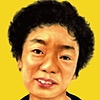
|
|
Jerks and Creeps
Recorded at two stops during their 2005 tour of Japan, Jerks and Creeps finds Seattle-based prepared guitarist Bill Horist and Accretions boss/electronics maverick Marcos Fernandes collaborating with two sets of guests. Horist and Fernandes are highly tactile and imaginative players, who bring a sustained motion and sense of playfulness to these non-hierarchichal soundfields. At the Kobe concert they were joined by vocalist and electronician Haco; the performance is dense and congested, from the opening sounds of spinning metallic bowl to the slurping frequencies at the end of the second piece. Individual noises whiz, whoosh, bang and whistle with a concentrated commotion, and the results have the jostling feel of a cramped, overheated kitchen in a small highway diner. Haco's baying vocals bring a recognizable human element, while Horist's taps and teases occasionally merge from the rough and tumble caterwaul. The single track from Osaka is more austere, despite the presence of additional musicians (trumpeter Masafumi Ezaki, electronics whiz Bunsho Nishikawa and American bassist Tim Olive); only Ezaki's trumpet squeaks are audible through the industrial noise. There's not much to distinguish the two sessions, but that's hardly a knock against the musicians, as the interplay and focus are formidably high throughout.
Recorded during Marcos Fernandes and Bill Horist's Japanese tour in 2005, "Jerks and Creeps" is what some would call an experimental feast for the ears. It's a lot more than just that of course. With Fernandes in charge of electronics and phonography and Horist on guitars and electronics, the duo also adds Haco on vocals and electronics, trumpeter Masafumi Ezaki, electronics guru Bunsho Nishikawa and bassist Tim Olive. Spread over two long pieces [around the half-an-hour mark and one short tid-bit] the ensemble rely heavily on development of a common language.
Three improvisations that sound innovative, fresh and surprising, different outlooks on electroacoustic microcosms that hide many untold secrets worthy of being revealed. Fernandes works with "phonography and electronics", while Horist is a great exponent from the latest wave of prepared guitar manipulators. Two segments were recorded in Kobe and feature Japanese experimental artist Haco (once the singer in After Dinner), herself distorting and camouflaging her voice behind electronic processing; the third was taped in Osaka together with Masafumi Ezaki (trumpet), Bunsho Nishikawa (electronics) and Tim Olive (electric bass). The tracks with Haco are probably better developed and, if I'm allowed to say that, a little bit glossier, the ones that tickle the unconsumed aesthetic sense of the audience, subjected to repeated doses of amorphous slinging, resonant clatter, colliding strings and introvert contractions spreading all over the place in about 32 minutes of truly alternative, almost neurotic action against sensual immobility. Hums and zings, mumbles and moans, radios and unrecognizable timbres, at times reaching unexpected apexes of incongruent beauty. The Osaka performance is certainly harsher yet not the least provocative, distortion and hiss more evident in the mix but very far from the "sheer noise" approach. Halfway through tenebrous and shattered, the sounds put forth by the quintet are enough to raise the eyebrows of sleepy consumers, forcing them to pay the utmost attention to a network made of myriads of tiny cells that - taken as a whole - transport the players in a collective poor man's nirvana. An increase of the urge of freaking out will likely be measured in unstable by-passers. There's a story of how Bill Horist invited the audience at one of his performances to take along anything they wanted for him to improvise with on his guitar and someone brought a six foot ladder. The anecdote goes some way in portraying Horist as a man with a love for exploring his instrument in unusual ways - and as a musician who found more inspiration in John Cage's prepared piano studies than in the "Concerto d'Aranjuez". Marcos Fernandes, vive versa, has been known for considering drums and percussions rather as tools to produce sound instead of beats - or at least not the ones you'd encounter in a standard dancing class. Both share an affinity for solo projects and the studio as well as for the stage and spontaneous interactions - which is probably why "Jerks and Creeps" has all the traits of a work immersed in improvisation, while flowing with the congruency of a well-structured symphony. Compared to Frenandes' previous efforts, at least, this record is remarkably easy to digest: "A Mountain is a Mammal" was a razorsharp percussive feverdream, which sent my girlfriend running from the room and had my neighbours complaining, while the far-beyond-its-time "Haco Hans Jakob Marcos" almost required a pair of 22nd century ears to be enjoyed. This time, however, the whole fabric of the music is more subtle and resonates with an emotional fragility. The nervous edges have not disappeared and there are ample high-frequency tone modulations, brusque mood swings and weird samples (of an oriental bazar, for example) to be found in all of these three pieces. And yet, Marcos and Bill are always searching for integration, for a dialogue, a trialogue or a general understanding between the various elements making up "Jerks and Creeps". Quite organically, the structures seem to gradually peel themselves off their external influence and drift off into the ether, turning self-sufficient and beginning a life of their own. Horist and Fernandes hardly exert any pressure at all, they gently steer the music from one stretch to the next, relying on a pool of powerful sounds, clustered drones and their collaboration with a host of guests - all of which seem to agree that if your instrument sounds the way it sounds by default, you're doing something wrong: Masafumi Ezaki supposedly plays trumpet on second piece "Osaka" and Tim Olive is quoted as providing bass lines on the same track, but if there's anyone out there capable of telling me the "when and where" of their appearances, may they please step forward. All of this suggests that the purpose of the encounter lay in stripping the music bare of obvious references, of using a particular piece of equipment for one's own proficiency in playing it, but not for the sake of its timbre or all of the associations which come with it. Quite on the contrary, everything that carries an all too obvious history has no place on "Jerks and Creeps". The album feeds from the sense of disorientation, which comes with finding one's place amidst alien structures, and then gently guides the listener down the most beautiful path through this terra incognita. Maybe this is also why the duo allows harmony and melody in more than ever before. Especially the half-an-hour long "Kobe" offers a shimmering and swooning middle section full of lush bass vibrations, while the short appendix "Kobe 2" surprises with a sense of concreteness and a strange, gravitating rhythmic pulse.
If there is a message behind these compositions, then it must be that one needs to first throw away everything one has learnt to revel in the magic of melancholic memories. Bill Horist and Marcos Fernandes have stayed true to their roots in improvisation and experimentation yet their absolute will to build something from deconstructed parts and to firmly organise fragmented elements shines through clearer than ever. Still curious about what happened with that ladder. |
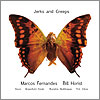
|
|
a mountain is a mammal
Californian Marcos Fernandes and New Yorker Mike Pride complement their set with modern tools. Recorded in 2005, their A Mountain is a Mammal pits percussion against beds of sounds. The first half-hour tends toward drums with atmospherics. It's an organic and meditative segment, where the electronics and field recordings (made around New York City) fall to the background and the light, slow drums dominate. The third track, however, takes a different turn for the final six minutes, layered with alien sounds and buried, guttural vocals. It's a surprising move, an unusual piece of audio work and the best part of the record.
Fernandes and Pride are two renowned percussionists who have been active in the free music scene for many years, playing with a virtual who's who of the most inquisitive minds of the "no pigeonhole" areas which include, among the others, George Lewis, Haco, Jack Wright, Anthony Braxton, Eugene Chadbourne, Nels Cline, Otomo Yoshihide (and counting). The splendidly titled "A mountain is a mammal" presents percussive dialogues that accept no stylish compromise, focusing on textural analysis and event-related spontaneousness. Austere if fantasy-gifted, this music offers a lot, ranging through various aspects of an anti-pattern approach that bristles with effervescent energy and denotes scrupulous attention for what the partner has to say. Metal, wood and skin are all parts of a context in which every component weights the same and no influence is noticed. There seems to be a struggle to achieve a controlled structural freedom, a semi-fractal kind of expression that borders on the ritualistic but also sounds rationally well behaved. Muscular playing is also featured, especially in the aptly named "A little more dangerous", while "More than everything" is a great moment of serenity, rippled by electronic processing and rebellious clattering, ending the record in a "dadaist" light, Pride's vocals halfway through a goose and throwing up his cookies. This stuff is made of many hits and few misses, moving with natural compulsion but always remaining extremely manageable as far as the degree of acceptability is concerned; Fernandes and Pride prove themselves to be two competent, keen-eared players with the capability of enhancing a conversational flow. The whole makes for 40 minutes of sober yet often exciting improvisation. You probably know the story about the chimpansee who was given ink and a pen and who re-wrote Beethoven's ninth. Well, this album is something like that. Not that it sounds like Beethoven or that any of its participants ever intended it to. Nor would I want to compare Marcos Fernandes and Mike Pride to monkeys. And yet, at its heart lies a similar process of using the infinite potential of an open mind to create an art free of any kind of pretentiousness. This in itself is nothing new. For decades, musicians have tried to bring their trade back to life from a coma of pompous artificiality. Marcos Fernandes might not be the most obvious example of how John Cage's philosophy can work in practise (and quite probably the influence of the latter on the former can be neglected), but we're pretty sure he could agree with Cage's thirst for "realness", his strife for an art which sought its inspiration in the events that immediately surround us, as well as with his famous bonmot: "You don't have to call it music, if the term offends you". Of course, only fools would mistake this for a total laisser-faire attitude. For last few years, Marcos has become ever more precise in formulating his distinct style on his own accretions label, mostly in conjunction with others. Depending on the constellation, the results were breathtakingly energetic ("Reverberations from Spring Past") or totally out.of-this-world ("Haco Hans Jakob Marcos"). But the brief meeting he shared with Mike Pride in 2005 must have come closest to his ideal of freely flowing energies. For one night, they improvised and recorded, then reworked the material in a process of constant exchange and what has found its way to this disc is cannily tangible, stormily spontaneous and jumps from one corner of the room to next like a kangaroo inside a cardboard box. Electronics and Fernandes' famous phonographies, which made for an important part of his recent jams, are now reduced to the background and merely reappear for the atmospheric finale "Is anything more than everything", in which Pride counters the sizzling and frizzling frequencies with gurgling vocals. In the 27 minutes of the album's core track, "A little more than dangerous", all kinds of rhythmical instruments, metal plates and a glockenspiel stream from disentangled states into razorsharp grooves, frenzied battles and moments of bliss. It's a daring enterprise and its nerve-wrecking intensity and defiance of any rules besides its own will make this a hard nut to crack for any genre-jugglers. We would like to meet the free jazz band which will allow only five minutes of this into their set.
Of course, neither producing senseless racket nor creating pumping beats are part of the intention. Please note: These two gentlemen are percussionists, not drummers and their art involves just as much physical sound treatment and gauging the sound potentials of their instruments as it does "being rhythmical". Maybe they wouldn't even mind if you thought that "A Mountain is a Mammal" sounded like two monkey beating their drumsticks at random. But much more than that, it sounds like a fresh wind blowing through a stuffy room, like not caring about what others may think. And like friendship.
Fernandes and Pride's "A Mountain is a Mammal" is a percussion rooted batch of experimental tracks that are extremely minimal and informed by a certain freestyle jazz structure with hints of math rock without the rock bit. One is given the sensation of a wide open space out of which is emanating the percussion textures. Some will find this boring and uninteresting, others will find fascinating. It's kind of something you have to lean back and soak up to properly appreciate. It's very much intellectual music and if you can't approach it from that angle you may have a hard time appreciating it on a visceral level. This is thoughtful music that functions outside the box using instrumental sounds with which we are all familiar. |
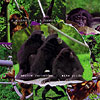
|
|
Haco Hans Jakob Marcos
Two California residents plus one Danish and one Japanese musician recorded
at a session in Tijuana, mexico in 2003. Marcos fernandes plays drums and
percussion, Hans Fjellestad synthesizer, Jakob Riis Powerbook, Haco
electronics, toys and voice. The outcome is a set of five agitated yet
tightly bound improvisations that disclose real affinity among these
disparate players. The capacity of Fernandes to mix his kit convincingly
with electronic instruments while heightening the music's momentum, most
notably on "Glow", is a key element in its success. Not that any group
involving Fjellestad is likely to becom becalmed, driven as he is by wild
enthusiasm for the analog synth's lurking squeals, chimes and burbles. Haco
and Riis add viscosity and texturing, and it all hangs together in motion.
The music will sound like nothing you have heard before...You may actually
find it breathtakingly exciting and awe-inspiring, without really being able
to say why. But in a time very far from now, your children's children's
children's children will play this record in whatever format the future will
come up with and think to themselves: "This is the coolest thing we've ever
heard!"
...as peppy as an old-fashioned coffee percolator and as adventurous as the
Mars Rover. The sort of whacked-out expedition I've been looking for for
some time.
Computers might not need an audible language to talk to one another, but I
imagine that if they did, it would sound an awful lot like this...And like
sitting at a street café in Paris without a word of French in your
vocabulary, you can absorb the arc of the conversation without any hint as
to what anyone is talking about.
Instantly, the whole gets instinctively connected to a bizarre underworld of
biotic agglomerates with a collective lunatic personality, in which
percussive fragments and an inexhaustible simultaneousness of electronic
idiosyncrasies join, acquiring a soft polymorphic consciousness. An utterly
impalpable sense of extraterrestrial counterpoint does the rest, giving our
perceptive channels the right amount of time to get used to this strange
concoction. |
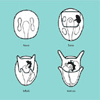
|
|
We Are
World beat rhythms converge with unrpredictable shifts in tone, atmosphere,
and structure, as Hay periodically interjects extremely unorthodox
vocalizing. Much of the disc is devoted to abstract sound and atmosphere,
but usually with some kind of percussive element to provide a center for the
other sounds to float away from and return. Surprising bursts of sound and
plenty of open space to allow things to happen create an open environment
for experimentation. The ensemble is excellent, but the things that make
this disc stand out are primarily Hay's wild, shaking vocals and the
interplay between acoustic instruments and electronic found sound. Strange
but invigorating.
Emily Hay and Marcos Fernandes employ flute, piccolo, reed instruments from
various cultures, vocalizations (whoops, yelps, squeaks and other wordless
scatting) and electronics to create strange, haunting, fragmentary textures
- some of them almost ambient, others veering within wailing distance of
free jazz. Rhis is an experience for adventurous listeners of all sorts...
Imagine a cross between Joan LaBarbara and Bjork and you're still only
halfway to an impression of Emily Hay's singing, which seems to take in
scat, flamenco and opera in equal measures. Despite the duo billing with
percussionist and field recordist Fernandes, bassist Lisle Ellis is on most
of the tracks, using electronic treatments in places as do the others.
Saxophonist Ellen Weller and guitarist Al Scholl turn up on "Inside The Box"
as well, but the focus is squarely on Hay, who works a bizarre magic on the
title track. Fernandes darkens the palette considerably on "Liturgy of
Sound" and on "Belly Of The Craft", which ought to be picked up as
soundtrack music for someone's experimental sci-fi short. And We Are Inside The Box, Away From The Doom, looking out from the Belly of the Craft onto the Pond at the Wicked Child while undetected by us an Intrusion takes place, triggered by a Late Night Call, promising Hibiki and a Liturgy of Sound. Oh yes, Spar, We Are! Not only are we inside the box, but we can hear everything that is going on at the outside, too. We hear an excellent voice, sometimes clear and innocent like a baroque angel and then again with vulgar touches, sinister and mean, brutal and vicious, only to erupt into cascades of spheric beauty. This is Emily Hay. But this is not all of Emily. She also masters her flutes in every aspect, with excellent technical skills and a wonderful virtuosity. But most of all, there is this daring concept of exploring the world of sounds, getting away from the known into the unknown and as-yet undiscovered parts of music and - yes - art. And when I say "art" I am not thinking about musical art alone, but also about the visual arts. This aspect has to be stressed, for there are close ties. What happens in the music, which Emily and her evenly talented collaborator, Marcos Fernandes, have realised, reminds me most of paintings with colours nobody has ever seen. Daring mixtures generating what only nature has to offer, unique and unprecedented. Emily and Marcos get very close to that in terms of sound and music. What impressed me most was "Inside the Box". This piece triggered some remarkable associations in me, starting with the the drums and rhythms of the Australian aboriginees. And then there are chaotic cascades of sound, very jazzy at times and excellently supported by Ellen Wellers saxophone play. This morphed into the picture of a nightmarish predator, roaming the realms of being like a giant calmar trying to slice a worn out motorblock with its razorsharp beak. Oh well, of course this is just me. But the fact that these kind of emotions came up prove to me that there is a significant emotional power in this particular piece. Not that it was the only track on this CD conjuring up some emotions. There is a great deal of violent force and yes, even brutality in "Spar", as far as I am concerned. "Intrusion" leads us with a colourful variety of sounds onto a path towards the unknown, triggering fears and then catapulting us back into well-known regions. An interplay between those worlds that seems� endless. Apart from all this praise, there is just one thing which raises a slight concern. Even though it might have been intended by Marcos and Emily, for my feeling some parts, especially in the flute play, though genuine and performed with virtuosity, came back like a copy in various pieces. As I said, it may be part of the big concept, but I would have wished for a little more variety there.
Anyway, "We are" is a great album, and I wish not only to name Emily and Marcos as well as Ellen Weller, but also Lisle Ellis and Al Scholl for their great contributions. |

|
|
Reverberations From Spring Past
Reverberations From Spring Past culls live and studio recording - made by the
quartet during the Spring Reverb '04 festival in San Diego - into a tapestry
of inscrutable, yet enjoyable, journeys.
An odd little recording, "Reverberations from Spring Past" is equally an electronic record as it is a true improvised set. From the very start of the session, you hear these four men are giving their all to draw you into their wild world of improvised mixology. Acoustic guitarist Ernesto Diaz-Infante is joined by electronics guru Robert Montoya, percussionist Marcos Fernandes and saxophonist Rent Romus. At every step of the way, they blow the perceptions of what this music "should" sound like. Is there too much electronics in their music or are they improvising too much? Or are they simply not jazz-enough for an ensemble that plays this "sort" of music - whatever sort that may be? Thing that I like about the record is the prominent interplay between Montoya's electronics gear and Fernandes on percussion and phonographies. Having played together for a decade with Wormhole, these two musicians have a sharp mind for collaboration. Squeaky, tweaked-up, high-pitched crescendos go hand-in-hand with percussive lines that seem to come from another planet. Nothing sounds linear in the universe of this band. Nothing sounds as if planned out ahead of time and more importantly, none of the music sounds chaotic in the least. From the jagged, hawking saxophone bursts to the scratched-up vinyl excursions to the delicately strummed guitar parts onto the horns and whistles [and various toys as well], the quartet have come onto a formulae of sorts. Play as you learn and learn as you play is what I think the quartet is after. Whatever the equation of that formula may be, it works in droves.
Now this is what I call an improv ensemble: Ernesto Diaz-Infante on acoustic steel-string guitar, Robert Montoya providing electronics, Marcos Fernandes on percussion and "phonographies," and Rent Romus on sax, voice, and "toys." Between the four of them there's about 75 years of improvised experimentation crammed onto this disc -- nine tracks of unpredictable noises and improvisational strategies with a distinctly acid-jazz feel.
In the very welcome tradition of today's West Coast improvisating population, "Reverberations from spring past" fuses four of the best local talents to produce a rather calm, bittersweet album which mostly revolves around Diaz-Infante loosely strummed detuned guitar generating a flux of dissonant transcendence polluted by Montoya and Fernandes' sonic debris, electronic and percussion utilized as complementary incidental background "presence" rather than self-indulgent protagonism. Amidst this relaxed (but not too much) mess, Rent Romus lends his saxophone according to his deserved reputation, his (mostly) gentle phrasing underlining a potential, yet still non-existent rebellion while transmuting the predominant tides into deformed film-noirish soundtracks, with rain pouring down on the trash amassed in dark alleys.
What's interesting about this collaboration is that a lot of the "soloing" is done in the subtler regions, Rent Romus stars as the one fanned flame, while the other three are working more atmospherically if not aquatically. A solid sender of a release, with nice strata throughout.
All four of them have their own distinctive voice...nice intimate playing by Romus in an environment of bubbling electronics, with inventive percussion and very linear guitar playing by Diaz-Infante. A courageous effort from these veterans from California...
What I like best about this particular set is the driving energy in the songs. There's not a lot of dicking around here. Rather, the folks have a destination in mind and they get there--with the requisite fuss, of course. One of the most engaging improv sets I've heard in a while. |

|
|
For Birds, Planes & Cello
Call it pure coincidence or a happy case of musical serendipity. Either way, two of this month's most arresting new albums feature the cello, although the manner in which it is used on Miya Masaoka and Joan Jeanrenaud's "For Birds, Planes & Cello" is dramatically different that on Jorane's "The You and the Now." The former is a wildly experimental yet beautiful instrumental opus on which the cello often plays second fiddle to the sounds of planes approaching Lindbergh Field and the sounds of more than 150 species of migratory and native birds in a Mission Hills canyon near the airport. The latter is a left-of-center pop album on which the cello and Jorane's supple vocals are happy equals. The common denominator between these otherwise disparate albums is the cello, a four-stringed instrument all too rarely heard outside of string quartets and symphony orchestras. Richly expressive, it can sound full-bodied or tender, earthy or ethereal, with the only limitations being the skill and imagination of the artist. Jeanrenaud, 49, launched her solo career in 1999, after spending 20 years in the acclaimed Kronos Quartet, the daring San Francisco ensemble that explored the outer reaches of contemporary classical, avant garde and World Music. Her most recent collaboration with Masaoka, a cutting-edge composer, koto player and electronic music maverick, was on the 2003 album "Fly Fly Fly," which also featured Larry Ochs of the Rova Saxophone Quartet. Jorane, 29 (real name Joanne Pelletier), is also classically trained, if not yet a master of the instrument like Jeanrenaud. Jorane's previous album, 2001's "16mm," was entirely instrumental. "The You and the Now," her third release, emphasizes both her cello playing and singing. Jorane's offbeat sensibilities are perhaps best demonstrated here by her collaboration with the Turtle Island String Quartet on a pulsating remake of Donna Summer's 1977 disco hit "I Feel Love." She also shows great promise as a songwriter, whether on her own (the tango-inflected "Pour Gabrielle"), teaming with Lisa Germano (the wistful ballad "Good Luck") or essaying "Pour Ton Souire" ("For Your Smile"), an eerie tone-poem by (and with) veteran U2/Emmylou Harris producer Daniel Lanois. Those craving music that relies neither on words nor conventional voices to make an impact should seek out "For Birds, Planes & Cello," an unusually subtle 54-minute composition by Masaoka. Her electronically modified koto playing is nowhere to be heard on the album, which finds her carefully mixing together the voices of dozens of birds with the roar of jet engines and Jeanrenaud's delicate cello filligres (created specifically to match the timbre and sonic frequencies of the birds and planes, which were recorded by San Diego's Marcos Fernandes, a mainstay of the Trummerflora collective).
This requires patient listening to appreciate, but those who take the time will marvel at how ingeniously Masaoka can challenge and change perceptions of what is, and isn't, music. By the album's conclusion, Jeanrenaud's piercing extended cello techniques are almost indistinguishable from the bird calls and jet roars they accompany. It's a potent reminder that what matters most in Masaoka's visionary work is the whole, not the individual components, and that intriguing music may be as close as the next hillside or canyon. |
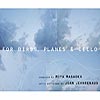
|
|
The Phonographers Union - Live on Sonarchy Radio
This is a beautiful, mesmerizing, highly poetic album. The Phonographers Union -- in this incarnation -- consists of nine artists from the West Coast community of field recordists and phonographers. The best-known names here are Christopher DeLaurenti (his electroacoustic works), Marcos Fernandes (his label Accretions) and Dale Lloyd (his website phonography.org and his genre-defining compilation albums). On April 12, 2003, the nine artists were gathered around a few tables in a Seatlle studio and asked to perform two half-hour long pieces for a radio broadcast. Each musician is armed with either a CD player, minidisc, sampler or other playback devices, and banks of field recordings covering all aspects of nature and human life -- from wind to children, machines to birds, busy streets to water, sports to music. With an acute sense of listening, the artists are combining their recordings (not mere sounds but chunks of space, as the microphone picks up more than just a birdsong or a creaking floor), creating a gripping aural symphony where the listener is left free of linking sounds together or imagining scenes that would accomodate all the sounds heard at one particular moment. More free-form and easy-flowing than musique concr�te, much more concrete than experimental electronica, this music speaks to the mind and the soul, as some of these sounds are very familiar, but their combinations evoke surreal situations. Since there are too many details, too many events to possibly absorb and remember everything in one sitting, each listen provides a different experience. And even people usually closed to avant-garde music will be able to sense the poetry and the immediacy of this album. Highly recommended as a key statement in the development of "field recording" or "phonography" as a form of sound art.
Human perception continues its furtive search for refuge and certainty on the slippery slopes of cultural bias, personal predisposition, learned behavior, wishful thinking, habit and the steady incursions of sometimes unpredictable stimuli. All that we encounter, no matter how heavily encoded, seems open enough to some form of interpretation. So you could say that what is perceived as innovation is really more about changing context--just enough to become unfamiliar while retaining some recognizable aspect--than inventing something entirely new. As music continues to move further and further away from the tempered scale, it's inevitable that typically occurring sounds and manipulated sounds, which have become readily recognized as stock musical elements, give way to completely non-objectified sounds. This happened in the visual arts more than one century ago: "Decalomania Without Preconceived Object" being just one technique geared at subverting the perception and preconceptions of artist and audience. Early "environmental" recordings still clung to context. They offered the security of an idealized seashore, or rainforest, waterfall or stream, in an effort to literally recreate a sense of place and familiar experiences: the precursor of virtual reality. It didn't take long for the notion of formalism or the need for context to be abandoned as a flawed, severely limited aesthetic. Phonography is here to set aside your preconceptions and open your ears to what must be the most egalitarian and open-ended of artforms. Of course, the transforming element is really a sort of sensory sleight-of-hand: phonography simply asks that you go blind. Without sight, listeners play a part in transforming the recorded material through their own subjective set of preconceptions, making the familiar into something bewildering. "Bewilder" originally meant actually being lost in a wilderness. Live on Sonarchy Radio gives you a great way to get there. Despite the healthy outdoor Methodism implied by their group title, this collective of sound artists and field recording engineers, located on America's north west coast, more closely resemble a group of parlour mystics in their modes of operation. Imagine them standing in passionate silence, waiting to hear a world that only their willfully selective microphones can capture. Then picture them later gathered together in a studio, joining hands over laptops, CDs and MD players. There is something magnificently Victorian about the whole endeavour, the sense of being invited to participate in a strangely beneficial seance. The goal of The Phonographers Union is, to use their own charming expression, "not to excite, confuse or entertain per se, but to attend to the world." It remains, however, a quaint world and one that is still best approached silently. Presented in its entirety, their set on Sonarchy Radio, a weekly hour-long show devoted to new music from the Pacific North West broadcast on KEXP-FM (for live streaming go to www.kexp.org), is a work of gentle concentration. Each of the contributors was given a pretty free hand in the choice and deployment of their material, the main structure being that any recording used should not be treated or filtered in any way beyond a little equalising or compression.
The resultant interplay between the various 'captures' displays an agreeable subtlety and sensitivity in its shifts of focus and range. Impossible to reduce to any kind of linear development or narrative, it reveals a bustling acoustic realm existing just outside our senses that deserves to be attended to.
It all sounds very naturalistic, like eavesdropping on a private scene rather than listening to an improvised (and broadcast) performance. This group, more than most field recordists, seems particularly interested in using recordings as a vehicle for improvisation. Rather than creating their own sounds in real time to blend with the contributions of the others, these musicians are placing pre-recorded sounds into the constantly shifting contexts created by their peers. Each new addition subtly shifts the ongoing dialogue, taking it to new places as the layers add up to a powerful and cohesive whole.
Live on Sonarchy Radio documents two long improvisations (divided into 8 tracks), when 8 members of the Seattle-based Phonographers Union got together with Marcos Fernandes; everyone whipped out their CD and mp3 players - plus one laptop - and threw down their found sounds. Doug Haire did an excellent job engineering the live mix: every sound source appears and disappears with finesse, allowing our listening mind to follow the conjunctive trail of ideas and sounds without any intrusions of hard, unbalanced signals. I love hearing so many people improvise using nothing but the best samples of what they've collected from the-world-as-it-exists-through-microphones. Sure, some of the sounds are things you can easily identify and would even be likely to suspect to crop up on a document like this - footsteps, kids in a park, birds, rain, etc. - but the force of this recording depends on the deft composite created by these kinds of sounds blended into a tapestry with more ambiguous ones. |
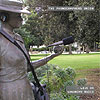
|
|
Hybrid Vigor
Hybrid Vigour comes from Fernandes' Portugese/Japanese background, his
Catholicism in a Buddhist land, and from the artists in the Accretions and
Trummerflora family. On the eight tracks here he has combined his
percussion, production and compositional skills to create an amazing and
strong album.
Percussionist/Improvisor Marcos Fernandes is the driving force behind the
Accretions label and a founding member of the Trummerflora collective among
other projects. His latest, Hybrid Vigor, is a roller coaster ride of
avant-rock and jazz, free-improv, sound collage and artfully crafted
freakiness . . .Hybrid Vigor will easily make my best of 2002 list.
.. . . Upon hearing Hybrid Vigor, you get the feeling that
percussionist/improviser Marcos Fernandes' roots are all-encompassing...As
such, his latest album 2becomes a junction between a worldly artist and the
anti-ethnocentric listener...Hybrid Vigor beats CNN, hands down.
Sound Art at its most elastic, with its ever-shifting cast of characters and
usual sounds, Hybrid Vigor could be a piece of cinema waiting to be shot . .
this narrative of mixed improvisations put together by percussionist/tape
manipulator Marcos Fernandes is probably truer to the artist's eye on CD
than anything would be on film stock. . . .Overall, this CD is a fine
achievement, and one that piques interest in the composer's future
creations. |
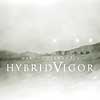
|
|
Frontier Life: Banda Sonora
. . . Marcos Fernandes steals the disc with "Bullets for Ballots" a strong
composition for percussion, sampler, piano, flute and saxophone topped by
sharp political audio-verite.
"Bullets for Ballots" is a rather Negativland-like composition with its
aural commentary in Spanish, pan tinkerings and pitter-patter electronic
sounds . . . This is seriously experimental territory and so curious in
parts, it makes one want to watch the documentary. A good effect,
undoubtedly and a sign of more delightful things to come... |
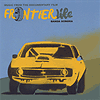
|
|
No Stars Please
Trummerflora music is collective improvising: a pool of players immersed in
the unfolding of a continuous present, egos submerged inthe sound stream.
The stream's currents tug towards free jazz, the extremities of rock, the
20th century chamber avant garde and electroacoustic strangeness. On the
second disc a core Trummerflora quintet gets spaced out in Carmel Valley,
locking into an eccentric approximation of the Krautrock freak 'n' roll
orbit.
These musicians make no attempts to hide their diverse backgrounds in rock,
jazz and world music and things really cook, . . . with Marcos Fernandes and
(Robert) Montoya's percussion to the fore laying Afro-minimal percussion
licks on top of spacious washes of electronics. It's fresh and original... |
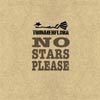
|
|
The Whisper Chipper
Marcelo Radulovich and Marcos Fernandes crank out what appears to be
improvised music in a style that might be described as ambient industrial,
though this label is not entirely accurate. The music is certainly based in
noise: grinding guitars, machine-derived clamour, white noise and squall
from radios, percussive shocks and a racket and din from miscellaneous sound
sources.
. . . a wonderful haunting improvisational-based recording of wood
chipper/shredder field recordings combined with layers of ambient guitar
noise loops, radio collages and tamboura box percussion. The overall result
of these processed compositions with multiple and delayed effects are
stunning and beautifully mesmerizing. This is a must-have item for the avid
connoisseur of ambient electro-acoustic music. |
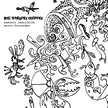
|
|
...and the reindeer you rode in on
You guys are just whacked, we love it!!!! Just when I was thinking that the
Christmas season was all dull along comes ...And the Reindeer you rode in
on. Thanks for all the wild wonderful stuff!!
...this five-man ensemble fares best when it casts caution to the wind,
as on a percussion-only version of "Jingle Bells" that evokes the Christmas
classic in name only, and on an envelope-pushing "Frosty the Snowman" that
clocks in at more than 10 minutes." |
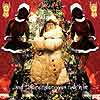
|
|
Bastard Musicians of Mesmer
Although the mellow meandering of the Soft Machine or the honed groove of
Liquid Liquid would both be kosher names to drop while referring to their
debut CD, The Bastard Musicians of Mesmer genre jumps from the subtly
tweaked worldbeat of Muslimgauze over to a full-blown Miles Davis -like
evil-live jazz. Stretching those tribal vortexes over two near-20 minute
extended movements . . . the WE collective probe the extra-global perimeter
with zero-gravity interstellar moodiness. |
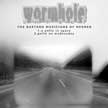
|
|
Wormhole Effect
Here we have a percussion-based ensemble whose creative muse has taken it
far from traditional jazz and into the ever-expanding realm of experimental
music . . . Like most of today's "experimental" music, "Wormhole Effect" is
replete with unanticipated snaps, crackles, pops and other assorted
electronically and organically produced noises. Unlike most, however, this
six-man ensemble smartly layers the noise on top of some of the fiercest
Latin rhythms I've heard in a long time. Special kudos to Robert Montoya on
the congas and Marcos Fernandes on drums. |
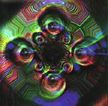
|
|
home | bio | music | news | press | links | contact |